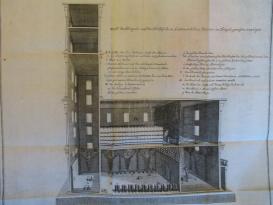The Greek word philanthrōpos, explained Gottfried Wilhelm Leibniz in 1693, means affection regulated by divine wisdom. It is a universal benevolence, he wrote, and benevolence is “the habit of loving or of willing the good.” Practioners of philanthropy cultivated habits they claimed enabled them to perform intrinsically benevolent actions. In the early years of the eighteenth century, Halle’s orphanage complex, founded by a Pietist philanthropist and Berlin Academy of Sciences member, became a key site for perfecting these regimens. Largely inside of this space and others modeled after it, practitioners worked to improve the intensive regimens of moral education for which their institutions became famous. They forged links between the quality of their love, spiritual exercise, instruments for measuring and improving “inclination,” and the characteristics of a divinely sanctioned, princely authority. These links were deliberately schematized to call into existence perfectly scaled relationships between state and local authorities.
This project explored the meaning of the model, and modeling practices, for these early practitioners of philanthropy. Many believed models inspired better ways of understanding in which one was able to apprehend the world through a combination of reason, sense, and intuition. A very large wooden model of Solomon’s Temple was a powerful representative of the program. It was used to make explicit links between Hebrew moral philosophy, the “conciliatory” rites of ancient Hebrew priests, the figure of Solomon, a universal Christianity and the architectural principles codified by Vitruvius. Practitioners also used the Temple model to initiate a process of conversion wherein the individual was to become better able to intuitively assimilate various forms of knowledge.
Phase One of the project concerned the status of the Temple model as an affective (or conciliatory) object and situated it in conjunction with other Temple models circulating at the time. Phase Two explored the Temple model’s relationship to contemporary models of machines and various forms of instrumentation.

